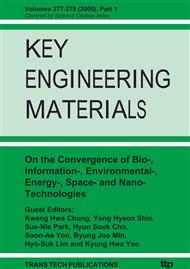p.7
p.12
p.19
p.23
p.28
p.33
p.41
p.45
p.51
Modeling and Simulation of Baroreflex Regulation of Heart Rate in Response to Respiratory Fluctuations in Arterial Pressure
Abstract:
Autonomic derangement can be assessed by depressed baroreflex sensitivity in a restrictive left ventricular diastolic filling pattern. However, it is unclear how reflex or other compensations affect the inspiratory fall of systolic arterial pressure (IFSAP) during acute airway obstruction. In an in-vivo situation, it is particularly difficult to isolate individual effects of heart rate, vascular tone, pleural pressure variation, and ventricular interdependence. For this reason, a computer model study was undertaken. A previously validated computer model of the cardiopulmonary system was adapted for this study, relating mechanisms such as baroreflex regulation of heart rate to IFSAP. The model provided time-course simulations of hemodynamics by numerically integrating 28 nonlinear, time-varying differential equations. Two models for baroreflex gain were tested, including a simple 1st-order relationship between systolic arterial pressure (SAP) and R-R interval (RRI) and the autoregressive moving average (ARMA) model reported in literature. The ARMA model predicted the next RRI based on SAP from several previous cardiac cycles and previous RRI predictions. Experimental data were obtained retrospectively from 22 patients with chronic airway obstruction before and during breathing through an external resistance. The computer model provided good fits to arterial pressure waveforms: correlation coefficients (r) ranging from 0.71 to 0.96 (mean±SD: 0.87±0.06) with a simple 1st-order SAP-RRI model. The ARMA model did not improve the goodness of fit.
Info:
Periodical:
Pages:
28-32
Citation:
Online since:
January 2005
Authors:
Price:
Сopyright:
© 2005 Trans Tech Publications Ltd. All Rights Reserved
Share:
Citation:


